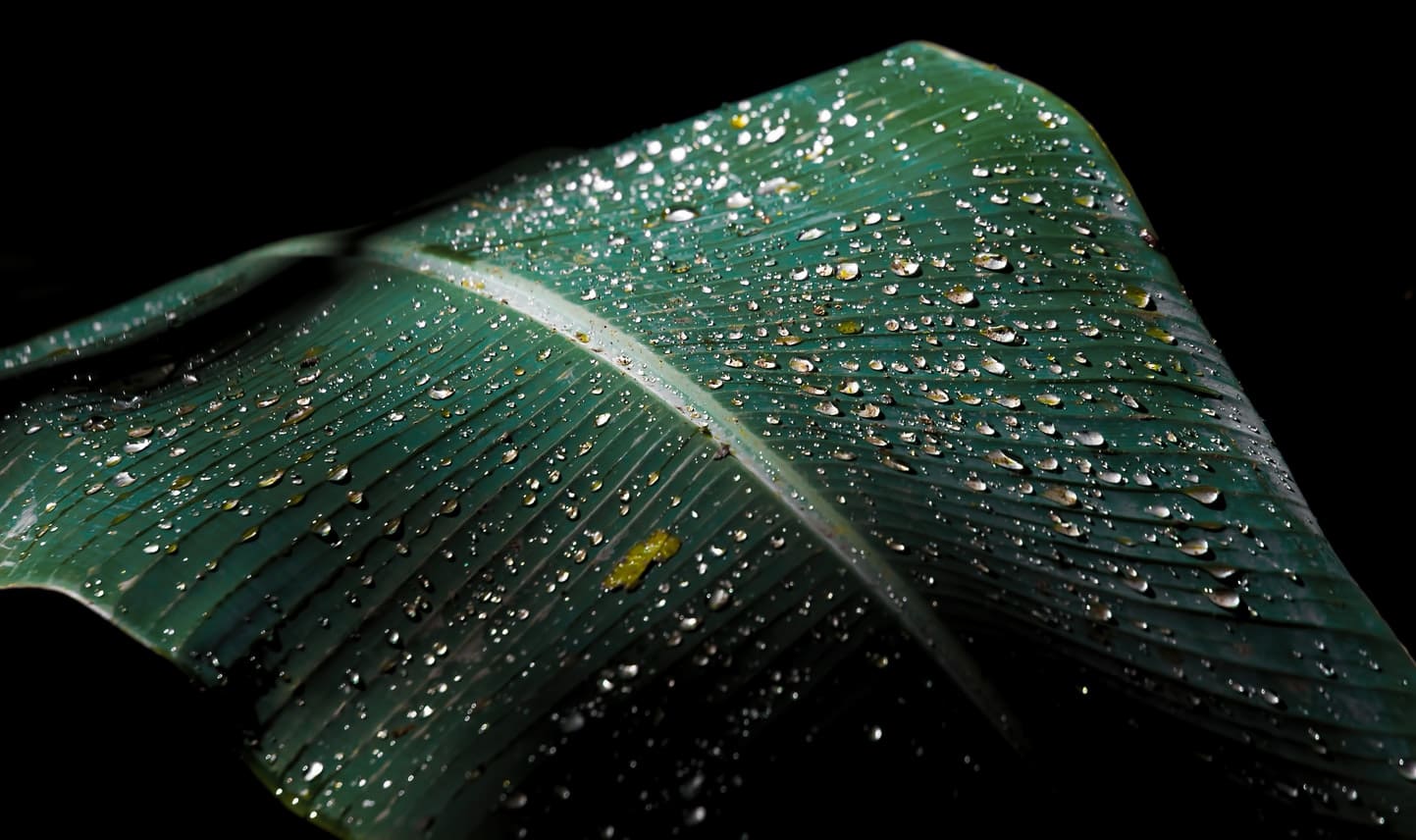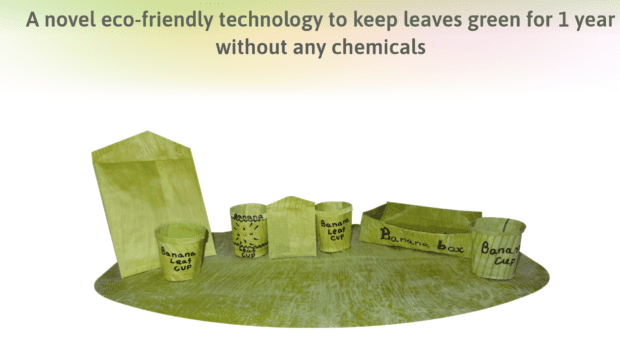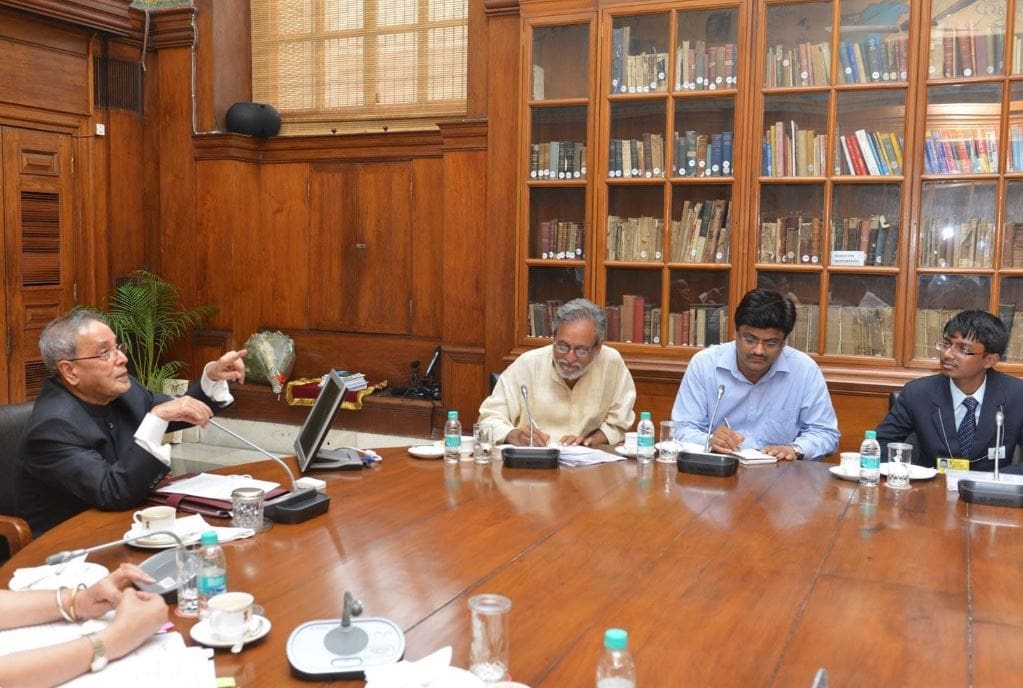
Paper and plastic are the key players in the destruction of the planet, and the millions of disposables that we use each minute across the globe makes them inseparable from our daily lives. Our failure to adopt alternative biodegradable disposable material has been fueling this climate epidemic so far.
Plastics and similar products can take years to decompose (never mind that they’re made from fossil fuels). Every year, the United States generates approximately 230 million tons of “trash” — about 4.6 pounds per person per day. Less than one-quarter of it is recycled; the rest is incinerated or buried in landfills.
But what if we could say goodbye to single-use plastic, and, instead, say hello to banana leaf wrappings and storage containers? A viable replacement for disposables, banana leaf technology prevents the destruction of around 7 billion trees annually.
What is Banana Leaf Technology?
As a general rule, banana leaves — and most other biomaterials — degrade within a shelf lifespan of 3 days and are then disposed of as waste. One inventive solution to this waste and to the reliance on everyday plastics has been posed by a 20-year-old Indian inventor named Tenith Adithyaa. A prodigy, he asserts that his banana leaf technology process is the way to turn the tide on plastics and devote only 1 cent consumption cost per use as part of the transition.
This technology enhances the banana leaves’ physical properties, thus making a viable biodegradable material alternative to both plastic and paper. The tech reinforces the cell walls and organs of plants, halting their aging process for up to 3 years. Once strengthened, these organic materials can be transformed into cups, plates, cones, envelopes, and boxes. Increased in their durability, stretchability, and crushability, preserved leaves can resist extreme temperatures and hold more weight than their original nature would have allowed.
After the biodegradable item has reached its full usage by humans, its material can be deconstructed naturally in 28 days. The preservation capability of leaves that have undergone the process with natural green color is for a period of up to one year and an extended shelf lifespan of three years without its natural color.
These processed biomaterials are said to be:
- biodegradable
- healthy
- pathogenic resistant
- human-friendly
- eco-friendly
- chemical-free
- able to be used as animal fodder
- cost-effective
Banana leaf technology has the potential to contribute significantly to lessening the global landfill crisis.
Interview with the Banana Leaf Technology Inventor
In Asian regions, banana leaves are considered a traditional food medium and used for food packaging. But the limited shelf life and properties were no match for its alternatives. The limitations prevented them from satisfying the human needs globally in the industrial age. As time went by, the drawbacks allowed them to be taken over by alternative products and made them obsolete.
This banana leaf technology idea was developed by Tenith Adithyaa, a young Indian innovative scholar who has commercialized and licensed the technology. He currently serves as the CEO of a social network called Altruu, a global track-free discovery engine that “allows connection with what matters to us.”
The inventor describes banana leaf technology as a cellular eco-friendly technology that preserves leaves and organic biomaterials for a year without the use of any chemicals. The process enhances cells, strengthens cell walls of leaves, and prevents pathogenic agents from destroying the cells, he says.
In a CleanTechnica exclusive, Adithyaa affirmed that:
“Banana Leaf Technology is an cellular enhancement tech to create bio-materials from leaves. Implementing this tech does not increase the need for banana plantations; thus, the current reforestation cycle will remain the same. The materials will be harvested from the existing banana trees, since most of the leaves from the banana trees are not utilized.
Our tech does not comes into banana cultivation, as it is an cellular tech. Hence, it can be used on any materials made of plant cells. The tech can be applied on any leaves — not only the banana. The banana leaves are mostly utilized because of their widespread cultivation around the world. (Our tech) will not alter the cultivation demand or decrease it, but there is an average water footprint of 790 m3/ton for bananas.
The supply chain is sustainable. Since these are FMCG products, the tech license will be transferable to companies around the global to fill the global needs. It allows manufacturing to happen locally, as material demand will be satisfied by the local supply. The logistics will be handled domestically. In the case of countries which are not suitable for banana cultivation, other leaves that are produced locally will be used.”
Owing to the economical, innovative, and environmental impact of this technology, Adithyaa’s banana leaf technology has received over 7 international awards and 2 national awards, including the prestigious International Environmental Award, International Green Technology Award, and the Technology for the Future Award, among other esteemed recognition.
Final Thoughts
We at CleanTechnica are curious about materials that might replace plastics in a sustainable way. Erika Clugston wrote about Finnish design house Aivan that presented a pair of concept headphones it calls Korvaa, made almost entirely from natural materials. Yeast, fungus, bioplastics, and other natural materials were used to replace anything that they could in the electronics. Steve Hanley described how scientists at the Lawrence Berkeley National Laboratory say they have created a recyclable plastic that can be disassembled into its constituent parts at the molecular level. I’ve examined state-wide initiatives to reduce and remove plastics as a necessary way to clean up local environments.
Adithyaa, the young and creative banana leaf technology inventor, notes on the company website, “This humble initiative to save millions of trees, directs a path for humanity towards saving the environment with the promise of circular economy, and now it is time to be the Heroes we were always meant to be: the guardians of the planet.”
Hear, hear, Tenith. Let’s all step up to be the heroes we need to be in these times of climate crisis.
Image gallery courtesy of Banana Leaf Technology
Source: CleanTechnica










